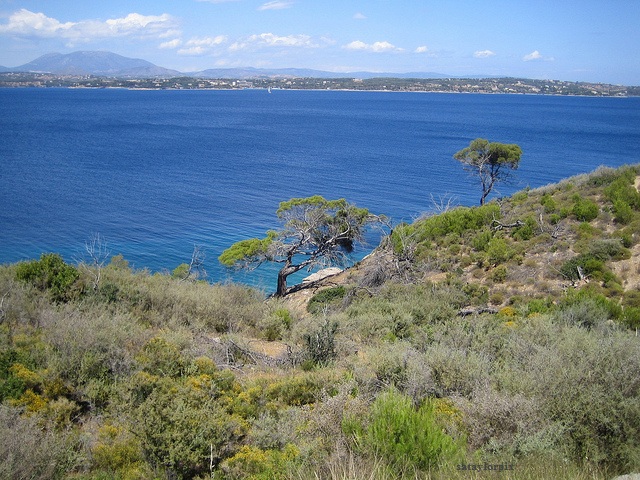I’ve not yet seen with my own eyes a living pterosaur. I explored a remote island in Papua New Guinea in 2004 but failed to see the ropen. I walked through a wildlife reserve in Orange County, California, in 2008, but failed to see the ropen-like flying creature. I set up a game camera in Lakewood, California, in mid-2012, but after examining 9,823 photographs I have failed to see any image of a living pterosaur. So why do I believe that they exist? It’s the eyewitness reports.
What do the following descriptions have in common (quoting eyewitnesses)?
- no feathers / tail it was very long & had a bushy or hairy tip / long bone looking thing sticking out the back of its head
- the same sort of texture as suede (i.e no feathers) / had a long thin tail
- They don’t have any feathers / tails about 3 to 4 meters long / LONG NECK
- no feathers / [tail length] 7 meters / diamond [on tail]
- no feathers in sight / longish narrow tail / [out the back of the head] It was like a horn
- did not appear to have any feathers / a long, skinny, pointed tail / diamond shape at the tip [of the tail]
- he had no feathers
- the head had a crest . . . solid, not feathery at all / tail was very long / [tail] ended in a thick, heart-shaped pad
Featherlessness and a long tail—these are reported from around the world. Sometimes an eyewitness will also report a head crest, sometimes a long neck, sometimes a structure at the end of the tail (“diamond”). For the above, here are the eyewitness report locations:
- Sudan, Africa – July of 1988 – from a native
- Spain – summer of 2007 – from a man from England
- city of Pagbilao, Quezon Province, Philippines – around 1994 – from a native
- Lake Pung, Umboi Island, Papua New Guinea – about 1994 – from natives
- Bougainville Island, (Papua) New Guinea – 1971 – from an Australian
- Brampton, Ontario, Canada – 2004 – from a Canadian
- Zaandam, Holland (Netherlands) – from a Dutch man
- Near Winder, Georgia, USA – 2008 – from a Georgian lady
Many other eyewitness reports we could examine, with flying-creature descriptions that clearly tie in with the above sightings. I once interviewed an attorney who had witnessed a giant featherless flying creature with a tail about fifteen feet long. Last week I received an email from a U. S. marine stationed at Fort Leonard Wood, Missouri; he saw a large flying creature with a “cone protruding from behind its head” and a “very long tail” that had “a diamond shape at the end.” That sighting was on January 2, 2013.
These kinds of descriptions can be found in accounts from around the world, including the United States, Canada, Australia and Papua New Guinea, although not every eyewitness has noticed every one of the following details:
- lack of feathers
- long tail
- structure at the end of the tail
- head crest
- long neck
But many eyewitness report two or three of the above, especially featherless appearance and long tail.
Eyewitnesses from various countries, of various cultures, with various languages—those common persons have encountered uncommon flying creatures, but significant details in descriptions are commonly repeated: long tail, head crest, structure at tail end, no feathers. Those differences in the eyewitnesses, when added to similarities in descriptions, equal an actual creature, a real flying creature, not extinct but living in our modern world of diversified humans.
Why Doubt Pterosaur Extinction?
Is the pterosaur-extinction idea a modern concept? No. It’s an old assumption, originating about two centuries ago, and it deserves to be buried alongside the long-held assumption (long ago dismissed) that the sun revolves around the earth.
The first pterosaur fossil discovery, in 1784 (four years before George Washington was elected president), was decades before Charles Darwin began writing about evolution. Where did those early fossil researchers get the idea of pterosaur extinction? It was just an assumption, originating from a few researchers who were ignorant of extant nocturnal pterosaurs. That leaves a world of room for us to doubt the universal extinction of all species of pterosaurs.
For those who still think extant pterosaurs are hard to believe, they should try explaining human mentality to an animal. The less intelligent animals live by instinct and to some extent by experience; the most intelligent animals learn more from experience and from following parents who have experiences the younger ones have not yet had. I know that human imagination is important, but some humans would be much better off following the examples of intelligent animals, for imagining ancient extinctions is far less reliable than listening to eyewitnesses of living creatures.
.

.
###
“Trust one eyewitness of a plane crash over the imaginations of a hundred professors who’ve agreed how that plane should fly.”
.
Bulverism and Extant Pterosaurs
C. S. Lewis, in the mid-20th Century, noticed an unfortunate trend becoming popular . . . bulverism
.



